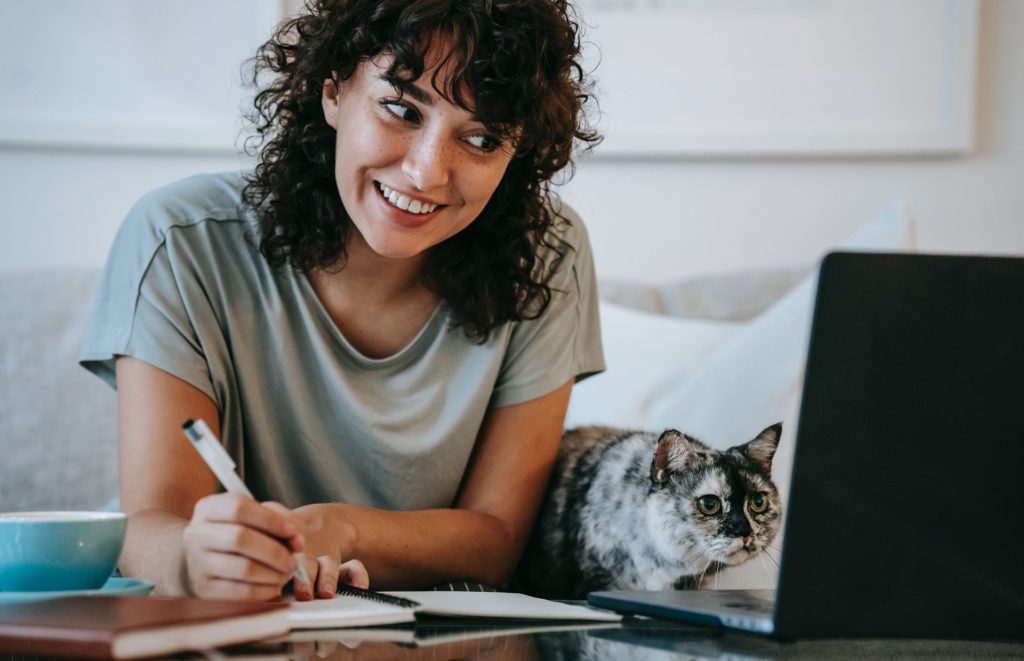
Therapy is no longer restricted within the walls of a therapist’s office. Virtual therapy continues to grow in popularity. Let’s take a look at what virtual therapy is and how you can get the most out of a session.
What is virtual therapy?
Like it sounds, virtual therapy is simply therapy that takes place in a virtual setting through some type of electronic device. You might use your laptop, phone, or tablet. This allows you to meet with a therapist while sitting in the comfort of your own home. You might also hear virtual therapy referred to as teletherapy, online therapy, or cyber counseling.
During virtual therapy, you might communicate with your therapist in any of the following ways:
- Video conferencing
- Instant messaging or chat room
- Phone call
- Clinic’s platform
Virtual therapy provides the convenience of group therapy sessions at the comfort of your own home, or a location that best suits you. During times of a pandemic, or simply our modern digital age, virtual group therapy sessions provide more individuals the opportunity to receive the necessary therapy they require. Group therapy allows you and a small group of people to jointly meet with the therapist. This provides an opportunity to connect with and learn from others who are struggling with similar issues.
Some of the common benefits include:
- Comfort
- Convenience
- Flexibility
- Safety
- Reduced barriers
- Effective
Tips for making the most of your virtual group therapy sessions
Whether you decide to participate in virtual or in-person group therapy sessions, or both, use the below tips to ensure you get the most out of your sessions. After all, your sessions are about you.
Find a space
One of the greatest benefits of experiencing virtual therapy is that you can go to your sessions from the comfort of your own home, or wherever you are. Take the time to find a space that makes you feel safe and comfortable. This could be in your bedroom, home office, or kitchen table. It could also be at your work office or in your car.
Regardless of where you pick, make sure it is quiet and private. Feeling safe during your session is very important. The safer you feel, the more likely you are to open up and be willing to dive deeper into your thoughts and feelings.
Also, make sure that your space is free of distractions during your session. This will help you to be present and engaged with your therapist. Here are a few tips to eliminate potential distractions:
- Use headphones to eliminate background noises that may bother you.
- Clear out other projects or work so you don’t feel tempted to multi-task.
- Turn on the “do not disturb” feature for your phone or completely turn it off so you’re not interrupted by phone calls or text messages.
- Put a “do not disturb” sign on the door to your space if you live with other people who may interrupt.
Many of the tips can transfer into a temporary space if needed. This might be necessary if you’re on vacation, traveling for work, or visiting relatives.
Check your internet
Since your virtual session will rely on the internet, take the time to make sure that you have a solid internet connection before you begin virtual sessions. You don’t want to let an unstable internet connection add to your stress.
With the increase of remote workers and other online users, we’ve all experienced the occasional internet problem. If you’ve noticed a pattern, try to schedule around it. For example, your internet might be slower every afternoon between 2 and 5 p.m. Schedule your sessions before 2 p.m. or after 5 p.m. to avoid any possible internet interruption.
Internet issues can happen without warning. If it freezes or drops the connection, breathe through it. Most internet connections resolve themselves in a few minutes allowing you to continue the session fairly quickly. If you’ve been experiencing issues throughout the day of your session, give your therapist a heads up when the session starts. Create a plan in case it happens during the session.
Lastly, make sure that all other technology is ready and working properly. Do you know how to work the camera and audio? Do you know how to use the therapist’s platform? Is your device plugged in or fully charged? All of these little things are easy to overlook. Get in a habit of checking your technology before you start each session to ease your mind. This will help you to focus on the session without worrying if your laptop battery is almost dead.
Center yourself
In the previous two tips, we’ve covered prepping your space and your technology. It’s equally important to take time to prepare yourself. Spend five to ten minutes gathering your thoughts and centering yourself before you begin the session. You can also take a few of those moments to just breathe. Breathing helps create calm.
It can help you and your therapist if you have an idea of what you want to talk about during the session. If it helps, make a list of things you might want to discuss. It doesn’t need to be all-inclusive. It can just include a few general ideas. If you’d like, add to it between sessions when things come up. This will help make sure that you don’t forget something days later when you’re talking to your therapist.
Also, make sure that you’ve taken care of your physical needs before you start your session. Grab a glass of water to keep next to you in case you need a sip. Visit the toilet. Have a blanket or sweater nearby if you think you might get cold. These little things can make all the difference in helping you to have a great session.
Be honest
As you go through the session, be honest with your therapist and yourself. Each session is about supporting you. Your therapist is there to help. If you’re not telling them what you need, the session may feel like a struggle. They cannot read your mind. Ask specifically for what you need or want from the sessions.
Also, be honest about your thoughts and feelings, even if you think it might sound strange. Your feelings are valid no matter what. It is okay to be honest with your therapist. It is even okay to say “I don’t know.” Part of the process is talking it through with them.
Another tip is to give your therapist feedback if needed. If the conversation heads down a different path, redirect. Let them know if the pace is too fast or too slow. If you don’t understand something, ask them to explain or clarify. All of these things allow your therapist to better support you.
Be yourself
Your therapist wants to help you succeed. In your sessions, relax and be yourself. Wear whatever you want to wear. Just be comfortable. If being in your pajamas feels comfy, wear them. The more relaxed you are in your environment, the more likely you are to be open and authentic with your therapist.
Have a favorite item nearby if it helps you feel good. This might be a favorite blanket, pillow, photo, mug, stuffed animal, etc. This could also be your beloved pet. If needed during a session, take a second to look at it or touch it. It can help you to feel calmer.
Also, remember that it is okay to show your emotions. If you feel like you need to cry, do it. Let it out. If you feel angry, that’s okay too. No matter what emotion you are feeling, and they will vary through the session, it is safe to express them to yourself and your therapist.
We hope these tips will help you to have authentic and helpful virtual sessions. If you are interested in learning more about the virtual group sessions offered by Alvarado Parkway Institute, contact us at 619-333-7050.
